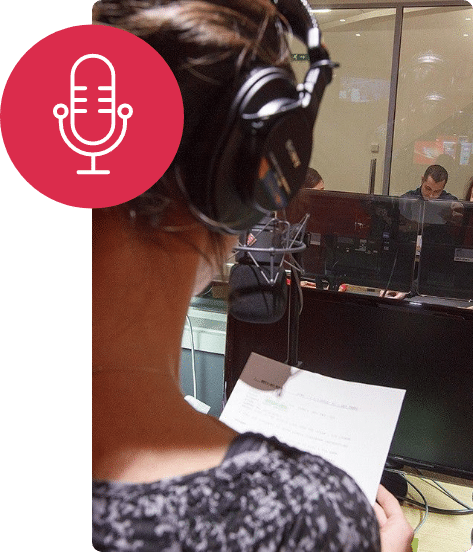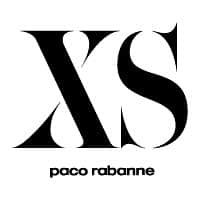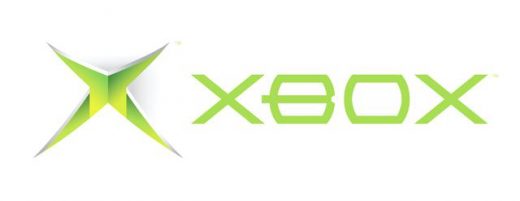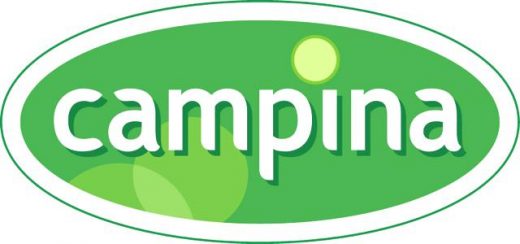Gaelic Scottish Audio & Video Translation Services
Video content is King
Send your project viral with the help of the UK’s leading Gaelic Scottish audio and video translation company.
Let us help you reach new markets and promote your content, with our expertise in re-versioning your audio and video content.
If a picture tells a thousand words, can you imagine what a video can do? Just look at the way social media is progressing, with the likes of YouTube, Vimeo, Snapchat and Vine; we are certainly the video generation, and so are your customers.
You will get an all-inclusive, cost-effective and hassle-free video translation solution.
From transcribing, translating a video and voicing it over, to creating Gaelic Scottish subtitles and graphically editing captions or on-screen text for a foreign language version of your video – we can do it all!
Impress your customers with a Gaelic Scottish version of your audio or video content, including business presentations, corporate and educational videos, e-learning courses, feature films, promo videos and many more.
GoLocalise adhere to rigorous quality assurance processes to monitor quality and precision throughout every stage of a translation project.
You won’t need to worry about the technical side or whether your product meets industry standards.
Our experienced project managers are all trained in voice over and subtitling and are well aware of the requirements and constraints involved.
We work with industry-standard subtitling software to thoroughly check all subtitle files before delivery, to ensure you get the highest quality possible.
We have more than 15 years’ experience in the localisation field, so you are in safe hands.
You can rest assured and trust us to deliver an accurately timed and perfectly translated Gaelic Scottish version of your script, audio or video content!
Whether you are a corporate client or a translation or production company, we will adapt to your needs so that you can add video or audio translation services to your portfolio of services.
We are only a call or email away or, if you prefer, visit our get-a-quote page to discuss your video or audio project in detail.
You will receive a Gaelic Scottish version of your video or audio file adapted to your project specifications and needs, and best of all, it will WOW your customers.
GoLocalise has been Atlas’s sole provider of translation and foreign voiceover services since 2011. Their friendly and efficient team have localised a range of technical and behavioural projects and in a variety of multimedia formats. Atlas considers GoLocalise to be our localisation partner; trusted to consistently deliver on time and to a high standard.
Learn more about Translation Services
Let's get started!
Create High Impact, First Time With GoLocalise As Your Audio And Video Translation Service Provider
- WOW your clients with first-class translations carried out by translation experts in that particular industry sector.
- Stringent quality control processes - subtitling (English) templates created and checked in-house, and timed to professional standards.
- Industry leading subtitling software to create subtitles that are perfectly timed to the exact frame and aesthetically positioned around shot changes.
- Your message faithfully and accurately delivered by experienced native subtitlers only.
- All translations are thoroughly quality checked by our experienced project managers before final delivery.
- You will receive ready-to-use videos with translated burnt-in subtitles - open captions - that are ready to be uploaded to your website. You can customise the style and look of the subtitles (font, size, colour, positioning, etc.).
- If you prefer to give your clients or viewers flexibility, why not go for subtitles that can be switched on and off in multiple languages? You can receive closed captions in the format of your choice – ready to be uploaded to YouTube or Vimeo channels, DVD or Blu-Ray.
- Go the extra mile by localising all your content. On-screen text and captions in your video can be translated and graphically edited, so that you receive a flawless foreign language version.
Let's get started!
Why Choose Us?

Leave your project to the experts at GoLocalise so that you can relax and be assured of getting top-notch results
Every single detail will be analysed, studied and looked after so that you do not need to worry. Some would say it’s not too classy to blow our own trumpet… but we just like to point out two very important details.
We have achieved ISO 9001 Quality Management certification in recognition of our consistent performance and high standards, and ISO 14001 Environmental Management because we care about our planet!
And if you are still curious and want to know more about us, why not have a look at our studio page.
GoLocalise offers transcription services for audio and video files in over 100 languages including English. Our expert team of transcribers will create a text version of your video or audio file, and we can also translate and/or voice over your transcript.
There are different variations of this service, all of which will result in a text document containing the dialogue from the source audio or video file:
This will include absolutely everything that is part of the footage, such as “ums, uhs”, false starts, noise words, any sounds, etc. The transcriber will also leave the speech as it is, even in the case of incorrect phrase or language selection, colloquialisms and poor grammar.
Word For Word Transcriptions
This type of transcription will only include the speech, but the transcriber will leave out any redundant or unnecessary elements such as nervous stutters, false starts, etc. The speech will however stay the same and will not be edited.
General Transcriptions
With this type of transcription, the style will be “written” more than “spoken”. Any grammar or syntax errors will be corrected in the process, and the text will read well and be grammatically correct.
We specialise in transcriptions that will be used as voice over scripts, (on-screen) captions and subtitles. Our experience in these fields has made us the top choice for clients all over the world who want to re-version their existing audiovisual content into several different language versions.
Transcriptions can be used for different purposes – as a script for a voice over session, or as reference when editing raw footage for example. We can also produce a time-coded and condensed version of the transcription that can be used for subtitling purposes.
No matter if your content is in English or any other language, we can help!
When localising and translating videos (whether you choose subtitling or voice over), you’ll find that often there are several elements that need to be localised. These elements can be on-screen graphics, text and/or captions.
Our expert project managers will review the video or project file and advise which elements would be best subtitled or graphically edited. If you do not have the project files, worry not; one of our expert editors will be able to re-create the graphics, captions and titles of your video.
Our expert editors work with a multitude of software: to localise graphics we use Photoshop or Illustrator; and After Effects and Final Cut Pro to create motion graphics and visual effects.
Once all elements are in the video, and the graphic elements have been created and localised, we can then rebuild the video and export it to whichever format and codec you need. We’ll prepare your video project for any platform, including PAL, NTSC, VOD, the Internet, smartphones, game consoles, mp3 players and tablets.
With our facilities and highly skilled operators, your videos are in safe hands!
3 Steps To High Quality Assurance
We use continuous quality control processes to monitor quality and accuracy at each and every stage of a translation project.
We use continuous quality control processes to monitor quality and accuracy at each and every stage of a translation project.
Each translated document is edited by a second translator to ensure accuracy and to address any linguistic issues. Again, the work is assigned to a specialist according to subject matter.
At GoLocalise, the translation process goes one step further with a final quality assurance step. A third translator revises the document to verify that editing changes and formatting have been properly implemented, and that there are no omissions or typographical errors. Every translation is checked word for word against the original and any changes that are required are made to ensure that the correct terminology is used consistently throughout the text.
Learn more about Translation Services
Let's get started!

Working alongside translation & production companies
Having a Having a strong audiovisual departmentHaving a on your side makes all the difference!
With GoLocalise you get an experienced and motivated team of professionals that work regularly alongside translation and production companies.
We understand the technical requirements necessary to produce perfect foreign language and English voice overs.
Our project managers will assist you along the way and we’ll break down the process and present it to you without the big words or technical industry jargon, so you don’t need to worry about the technical aspects and can simply concentrate on growing your business.
By working with GoLocalise you’ll be able to offer additional services, i.e., voice over, subtitling and translation to your clients, with a partner who will deliver and on whom you can truly rely.
When working with translation companies we provide easy-to-follow guidelines so that you can provide your own translations for us to “convert” into subtitles, or voice over your translated scripts.
Or if you prefer, we can take the entire project off your hands and keep things simple for you – it’s your call!
We’re equally used to working with production companies, so we can deliver your translations or subtitles in any language and format of your choice – either burning-in the subtitles onto the video for you, or supplying you with XML or PNG files for you to do yourself – Adobe After Effects and Final Cut Pro ready files.
Reach your target market
Don’t leave your important communication to chance. Make sure your message is clearly understood by your audience and choose GoLocalise for your next voice over project. Check out our latest case studies.
We have thousands of passionate and professional voice over artists ready to work with you. Meet some of them in our blog stories.
No matter the type of voice you are looking for, we’ll either have it in our books or find it and source it for you. We’ll organise a casting and ensure you get the perfect voice to suit your needs.
You will also benefit from having your own dedicated project manager – a single point of contact – to guide you through your project, answer any questions you may have and make things a whole lot easier.


Meet your dedicated project manager
Your project will be in the safe hands of one of our multilingual project managers. They will guide you through every step and ensure you understand the process.
Our industry has a tendency to use lots of technical jargon but your dedicated project manager will be on-hand to untangle the mess and explain all you need to know to ensure you only pay for what you need.
If you need help in choosing the right voice over talent to deliver your message then just ask your project manager.
From booking our voice over recording studios to ensuring you project is delivered on time in your chosen media, relax and let your experienced project manager take care of everything.
You will receive unparalleled attention to detail and customer focus at competitive prices. You’ll wish everything was as easy as a GoLocalise voice over!
Your most discerning customers will thank you for choosing our modern state-of-the-art recording studios. Every detail has been carefully thought through for your comfort, leaving you to simply focus on what matters most – the voice over session.
Your recordings will sound beautiful and crystal clear thanks to our high-end studio sound-proofing and audio equipment, i.e. ProTools HD and Neumann microphones.
Maximise your budget by reducing the need for retakes with the help of our experienced in-house sound engineers who will professionally capture and edit your audio.
And for those recordings in languages which neither you nor your client speak, we’ll bring a qualified pro to your session to add that essential ingredient.
To make you feel right at home, we provide high-speed Wi-Fi Internet and air-con is available. And last but not least, we have the biggest cookie jar you’ve ever seen, that’ll make your custom brew taste even sweeter!

A Translation Masterclass
At GoLocalise nothing is too much hassle! The expert team of project managers, translators and linguists are always at hand to ensure your content is perfectly localised – whatever the media. You’ll benefit from a company with over 15 years’ experience, an in-house subtitling team, and in-house state-of-the-art recording facilities!
Audiovisual translation, or AVT, is a highly specialised type of translation, which is increasingly popular in today’s digital world. We are surrounded by audiovisual content, so it makes sense that there is a type of translation that is suitable for the modern technological world.
AVT requires some of the same skills as general translation but also poses additional challenges. In subtitling for instance, the translator must fit the translation into the time and space constraints posed by the video; whilst in voice over the length of the translation must be considered and match the original as closely as possible. And these are just a few examples.
AVT is certainly no easy task and it takes a team of experienced professionals to do it well. This is where we can help you. We are highly specialised in AVT, so you can trust us to deliver products which look good, sound great and are perfectly suited to your target audience, all in your preferred format.
We know that a game doesn’t just have to look good and play smoothly, it also has to sound great and read well too. That’s why we, at GoLocalise, provide all our clients with carefully selected linguists, who are not only specialists in the video game field but are also gamers themselves.
We look after every single detail when localising games into foreign languages and always use the latest glossaries for all the current video game platforms, Wii, PlayStation, Xbox, etc. so that terminology and platform word choices are always spot-on.
GoLocalise provides your company with e-learning translation, localisation and voice over services, leaving you with a ready-to-host product.
We only employ highly skilled linguists who have extensive experience in e-learning and a sound understanding of the particular industry sector they are dealing with.
Our service includes the management of the whole process and the delivery of content adapted to foreign markets.
The steps and services involved in any end-to-end e-learning project are: the translation of the course and on-screen text; the localisation of the course graphics; the voice over recording of the course with your preferred voice over talent/s; and the quality control during which the localised course files are reviewed against the original files.

Price Match Promise
Challenge Our Prices, Enjoy Our Quality
A Brief History Of Gaelic Scottish
Scottish Gaelic, sometimes also referred to as Gaelic, is a Celtic language native to Scotland. A member of the Goidelic branch of the Celtic languages, Scottish Gaelic, like Modern Irish and Manx, developed out of Middle Irish, and thus is ultimately descended from Old Irish.
The 2011 census of Scotland showed that a total of 57,375 people (1.1% of the Scottish population aged over three years old) in Scotland could speak Gaelic at that time, with the Outer Hebrides being the main stronghold of the language. The census results indicate a decline of 1,275 Gaelic speakers from 2001. A total of 87,056 people in 2011 reported having some facility with Gaelic compared to 93,282 people in 2001, a decline of 6,226.Despite this decline, revival efforts exist and the number of speakers of the language under age 20 has increased.
Scottish Gaelic is not an official language of the European Union or the United Kingdom. However, it is classed as an Indigenous language under the European Charter for Regional or Minority Languages, which the British government has ratified, and the Gaelic Language (Scotland) Act 2005 established a language development body, Bòrd na Gàidhlig, “with a view to securing the status of the Gaelic language as an official language of Scotland.
Outside Scotland, a dialect known as Canadian Gaelic is spoken in parts of Eastern Canada. In 2011, there were approximately 1,500 Gaelic-speakers in Canada with the vast majority in the province of Nova Scotia. About 350 Canadians in 2011 claimed Gaelic as their “mother tongue”.
Aside from “Scottish Gaelic”, the language may also be referred to simply as “Gaelic”. In Scotland, the word “Gaelic” in reference to Scottish Gaelic specifically is pronounced [ˈɡalɪk], while outside Scotland it is often pronounced /ˈɡeɪlɨk/. Outside Ireland and Great Britain, “Gaelic” may refer to the Irish language.
Scottish Gaelic should not be confused with Scots, the English-derived language varieties which had come to be spoken in most of the Lowlands of Scotland by the early modern era. Prior to the 15th century, these dialects were known as Inglis (“English”) by its own speakers, with Gaelic being called Scottis (“Scottish”). From the late 15th century, however, it became increasingly common for such speakers to refer to Scottish Gaelic as Erse (“Irish”) and the Lowland vernacular as Scottis. Today, Scottish Gaelic is recognised as a separate language from Irish, so the word Erse in reference to Scottish Gaelic is no longer used.
Many historians mark the reign of King Malcom Canmore (Malcolm III) as the beginning of Gaelic’s eclipse in Scotland. In either 1068 or 1070, the king married the exiled Princess Margaret of Wessex. This future Saint Margaret of Scotland was a member of the royal House of Wessex which had occupied the English throne from its founding until the Norman Conquest. Margaret was thoroughly Anglo-Saxon and is often credited (or blamed) for taking the first significant steps in anglicising the Scottish court. She spoke no Gaelic, gave her children Anglo-Saxon rather than Gaelic names, and brought many English bishops, priests, and monastics to Scotland. Her family also served as a conduit for the entry of English nobles into Scotland. When both Malcolm and Margaret died just days apart in 1093, the Gaelic aristocracy rejected their anglicised sons and instead backed Malcolm’s brother Donald as the next King of Scots. Known as Donald Bàn (“the Fair”), the new king had lived 17 years in Ireland as a young man and his power base as an adult was in the thoroughly Gaelic west of Scotland. Upon Donald’s ascension to the throne, in the words of the Anglo-Saxon Chronicle, “the Scots drove out all the English who had been with King Malcolm”. Malcolm’s sons fled to the English court, but in 1097 returned with an Anglo-Norman army backing them. Donald was overthrown, blinded, and imprisoned for the remaining two years of his life. Because of the strong English ties of Malcolm’s sons Edgar, Alexander, and David – each of whom became king in turn – Donald Bàn is sometimes called the ‘last Celtic King of Scotland’. He was last Scottish monarch to be buried on Iona, the one-time centre of the Scottish Gaelic Church and the traditional burial place of the Gaelic Kings of Dàl Riada and the Kingdom of Alba.
During the reigns of the sons of Malcolm Canmore (1097-1153), Anglo-Norman names and practices spread throughout Scotland south of the Forth-Clyde line and along the north-eastern coastal plain as far north as Moray. Norman French became dominant among the new feudal aristocracy, especially in southern Scotland, and completely displaced Gaelic at court. The establishment of royal burghs throughout the same area, particularly under David I, attracted large numbers of foreigners speaking ‘Inglis’, the language of the merchant class. This was the beginning of Gaelic’s status as a predominantly rural language in Scotland. The country experienced significant population growth in the 1100s and 1200s in the expanding burghs and their nearby agricultural districts. These economic developments surely helped spread English as well.
Gaelic still retained some of its old prestige in medieval Scotland. At the coronation of King Alexander III in 1249, a traditional seanchaidh or story-teller recited the king’s full genealogy in Gaelic all the way back to Fergus Mòr, the mythical progenitor of the Scots in Dál Riata, “in accordance with the custom which had grown up in the kingdom from antiquity right up to that time”. Clan chiefs in the northern and western parts of Scotland continued to support Gaelic bards who remained a central feature of court life there. The semi-independent Lordship of the Isles in the Hebrides and western coastal mainland remained thoroughly Gaelic since the language’s recovery there in the 12th century, providing a political foundation for cultural prestige down to the end of the 15th century.
That being said, it seems clear that Gaelic had ceased to be the language of Scotland by 1400 at the latest. It disappeared from the central lowlands by c1350 and from the eastern coastal lowlands north of the Mounth not long afterwards. By the mid-1300s English in its Scottish form – what eventually came to be called Scots—emerged as the official language of government and law. Scotland’s emergent nationalism in the era following the conclusion of the Wars of Scottish Independence was organized using Scots as well. For example, the nation’s great patriotic literature including John Barbour’s The Brus (1375) and Blind Harry’s The Wallace(bef. 1488) was written in Scots, not Gaelic. It was around this time that the very name of Gaelic began to change. Down through the 14th century, Gaelic was referred to in English as ‘Scottis’, i.e. the language of the Scots. By the end of the 15th century, however, the Scottish dialect of Northern English had absorbed that designation. English/Scots speakers referred to Gaelic instead as ‘Yrisch’ or ‘Erse’, i.e. Irish. King James IV(d. 1513) thought Gaelic important enough to learn and speak. However, he was the last Scottish monarch to do so.
Learn more about Translation Services
Let's get started!
The Complete Solution To Adapt Your Content
Looking to get your entire project under one roof? Look no further, we can help you make life easier for you!

- Neumann Microphones
- On-hand Sound Engineers
- Talented Voice Over Actors
- State-of-the-art Recording Studios

- Tailored to Your Business
- Stringent Quality Control Process
- Laser-Focused Project Managers
- Global Network of 600+ Languages

- Professional Subtitlers
- Open/Closed Captions & Web
- Industry-Standard Software
- Subtitle Burn-in & Graphic Editing

- Improve accessibility
- Reach a wider audience
- Increased SEO and video views
- Maximise your video's engagement









